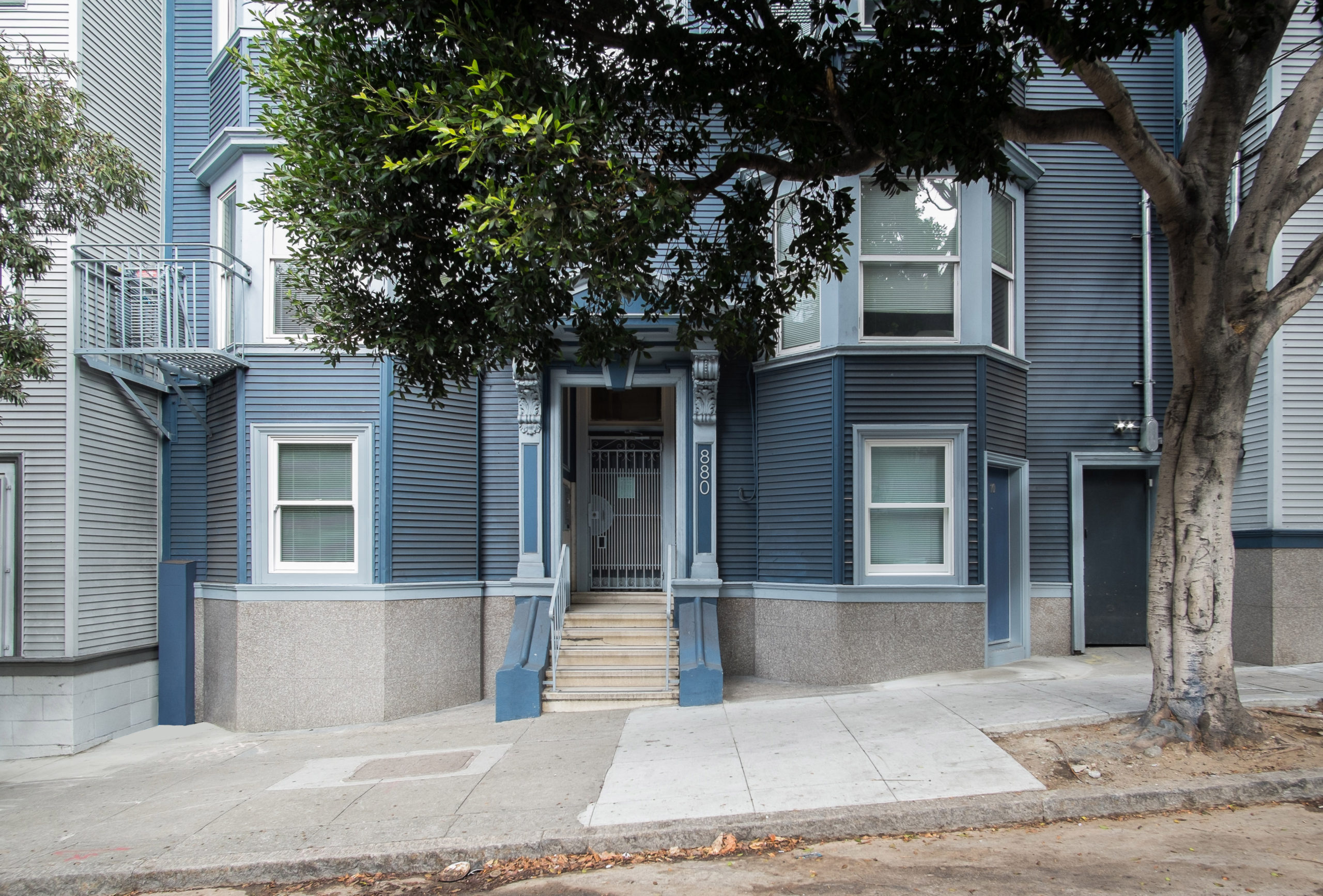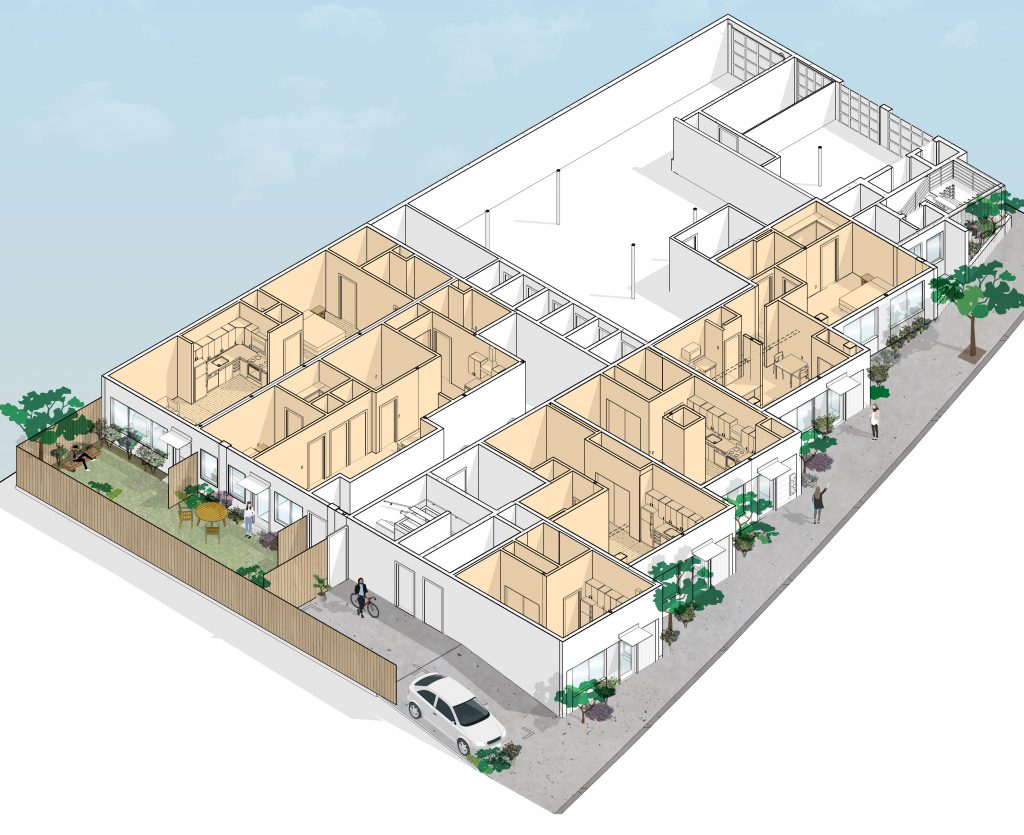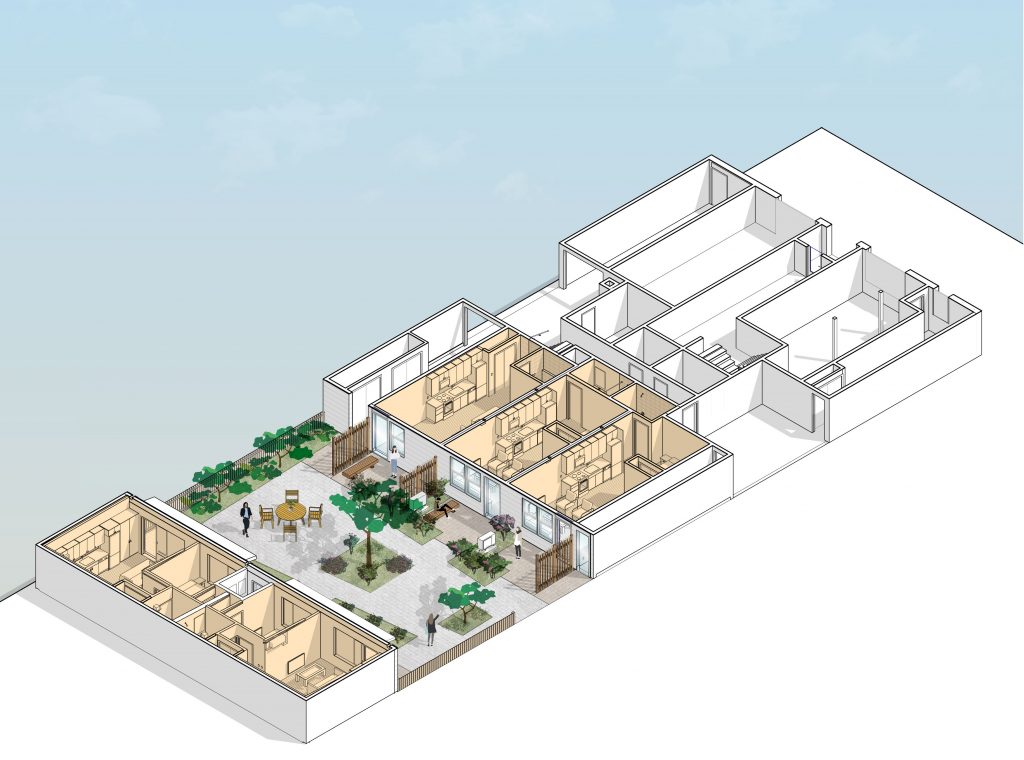THINKING: housing projects
Multifamily Accessory Dwelling Units (ADUs) in California: New Rules Ease the Path for Apartment Owners Statewide

Accessory Dwelling Units (ADUs) have been a hot topic of conversation over the past few years as California searches for more ways to build new housing in areas that are in demand and close to transit and jobs. Also known as in-law units and granny flats, this type of housing is often associated with detached backyard cottages or garages converted to living spaces in single family neighborhoods. However, ADUs can also be found in apartment buildings by converting garages and other unused spaces. San Francisco passed local laws allowing this several years ago, and California state law recently changed to allow them statewide. OpenScope’s experience designing multifamily ADUs in San Francisco since 2015 has given us a head start on this fascinating opportunity to add density to existing buildings.
Why add accessory dwelling units to your multifamily building?
New units, with finishes comparable to new construction, can usually be added at a cost that is significantly lower than the additional property value they create, especially if this work can be done at the same time as other building improvements you may be considering- like electrical or seismic upgrades.
In buildings with underutilized garages or storage areas, ADUs are an excellent way to generate additional income off the space you already own, often while making improvements to the building that will benefit your tenants in the existing units.

What do multifamily ADUs look like?
In most cases, ADUs look just like regular apartments. Multifamily ADUs are typically located in spaces formerly used as parking or storage inside an apartment building or in an existing detached structure on the same lot. Multiple units can be installed in one building, in San Francisco there is no cap on the number of additional units that can be added if they are code-compliant and the building already has five or more units (smaller buildings can add one unit, or an unlimited number if you do a voluntary soft story upgrade). In the rest of California, you can install at least 25% of the total number of existing units in the building.

Typically, during the earliest phase of the design process we will be able to tell you how many units you can convert from the space available on your multifamily property. In many buildings the limiting factor will be how much exterior wall area is available – every unit and each sleeping room within a unit must have a window to the exterior, and the area outside the unit must meet minimum dimensions. We will also be able to advise you on how to connect the units to the street and existing common areas, and will be able to suggest other building improvements that could be tied into the project. Lobby, laundry and landscaping improvements are often part of an ADU construction project.
The interior finishes of Accessory Dwelling Units (ADUs) often set them apart from a lot of the existing apartment inventory because they are all new. Upgrading interior finishes on ADU projects does not add a huge amount of cost to the project and can often help command higher rents and lead to less maintenance in the long term- spending more money on stone countertops, for example, makes them much less likely to be damaged vs. installing a much cheaper laminate counter.
New California State ADU Laws for 2020
ADU laws have been passed at the state level going back to the 1980s, but in recent years the dire need for new housing statewide has prompted legislation that requires local municipalities to allow more of these units. On January 1, 2020 SB 13, AB 68 and AB 881 all took effect, the local laws in many cities have not yet been updated to reflect the changes (as of the time this was written).
Outside of San Francisco, the new law will have a more sweeping effect as most other cities did not previously allow for ADUs in multifamily buildings. The new regulations should allow for additional units (up to 25% of your existing unit count), a relaxation of parking requirements, and some fee waivers, among other things.
Another major development in the state law is that property owners can add two freestanding ADUs to the same parcel as an existing multifamily building. State law requires at least a 4’ setback on the property lines and a 16’ height limit but it does allow for existing structures like garages to be repurposed. Some cities have even more lenient rules than this, if a local ordinance has been adopted. This would make it easy for owners of apartment buildings with surplus lot area or unused overflow parking to build new freestanding structures. Here’s a case study of The Union Street multifamily garage conversion to apartments.
San Francisco Accessory Dwelling Units (ADUs) Rules
San Francisco has gone through a number of versions of its ADU regulations, and they will continue to evolve. In the first version of the ADU law, new units were limited to being installed in a small trial area in the Castro neighborhood. ADUs were eventually allowed citywide, and the details of the regulations have been tweaked to reflect the realities of working in our City. At the time of this writing, there are two ADU programs under the Planning Code:
San Francisco Non-waiver ADUs
These ADUs comply with the Planning Code without any requests to waive typical requirements. They are in single family homes and are usually a conversion of a basement, garage or storage space. On some lots, a detached unit can be built. It would now be possible to build non-waiver ADUs in some apartment buildings.
San Francisco Waiver ADUs
These ADUs require Planning Code waivers for things required for a typical residential project in San Francisco, like Exposure (every new unit must face an open area of a prescribed size) or Open Space. These are reviewed by the zoning administrator but do not require a hearing. These ADUs can be built in single or multifamily buildings. In buildings where you are doing a seismic retrofit or where there are more than four existing units, an unlimited number of additional units can be added. In some buildings, where there is a lot of unused space, owners have been able to add six or more units. Units built under this program need to file a Costa Hawkins Waiver and Notice of Special Restrictions to agree to subject the new units to Rent Control.
For all Accessory Dwelling Units (ADUs), the Department of Building Inspection and the San Francisco Fire Department have written up building code equivalencies to address common issues that come up when adding units to an old building. These allow for alternate ways of addressing Building Code requirements in buildings where it would not be feasible to build new units under the letter of the current code because of existing non-conforming conditions.

Challenges
The COVID-19 pandemic is clearly on everyone’s mind. While we are seeing articles about rents declining and vacancies, it’s important to remember that adding Accessory Dwelling Units (ADUs) to your property is a fairly long project. From design kick-off to occupancy, the entire project could easily take 18-24 months depending on your financing, contractor availability and the extent of construction.
Starting design on your project now would allow you to be in a good position to build the project if construction prices start to decline as retail and office construction slows over the next year. Given the overall long term desirability of California’s cities, by the time your property is ready for occupancy the rental market will likely be improving.
Summary
Adding Accessory Dwelling Units (ADUs) to your apartment building is an excellent way to add value and make the highest and best use of your existing multifamily property investment. While construction is expensive, the value created based on increased rental income usually makes it a good investment. It’s also a great opportunity to make other improvements that will make your building more attractive to potential tenants. Please email us at info@openscopestudio.com or call us at 415-891-0954 if you’d like to discuss a potential project.